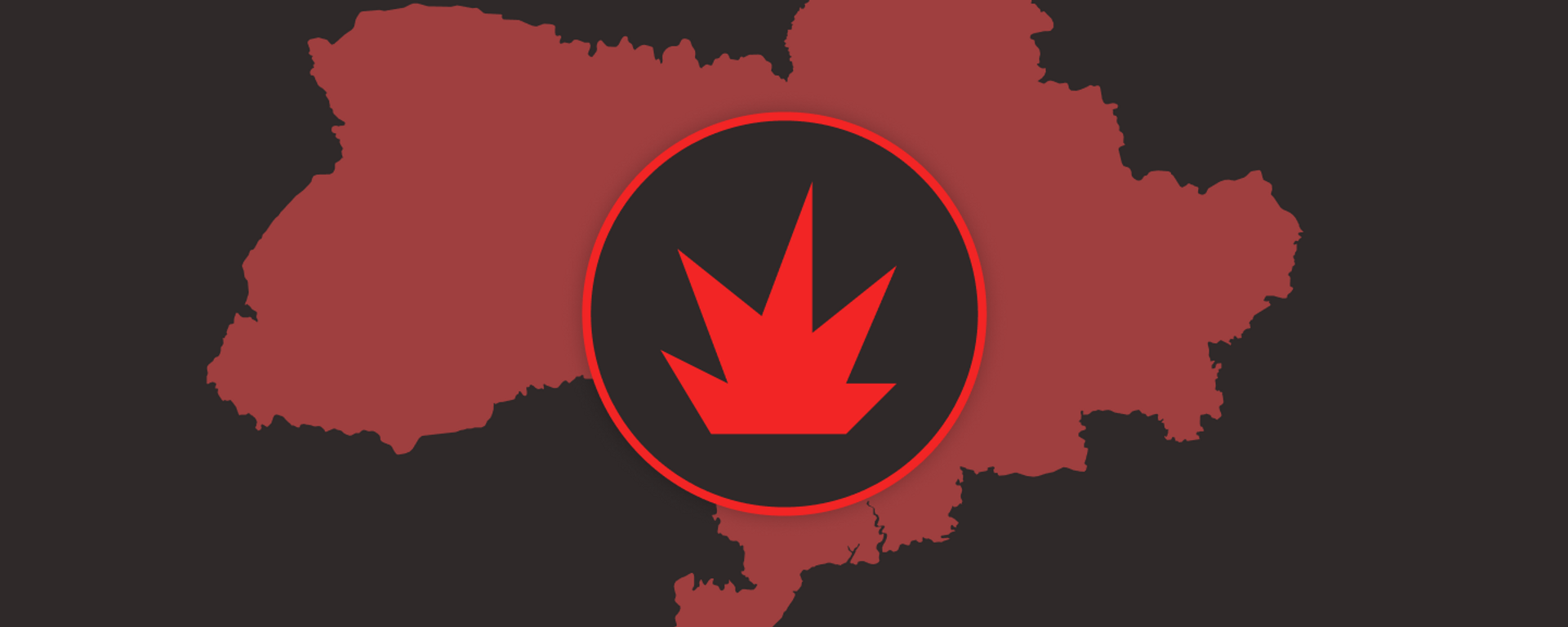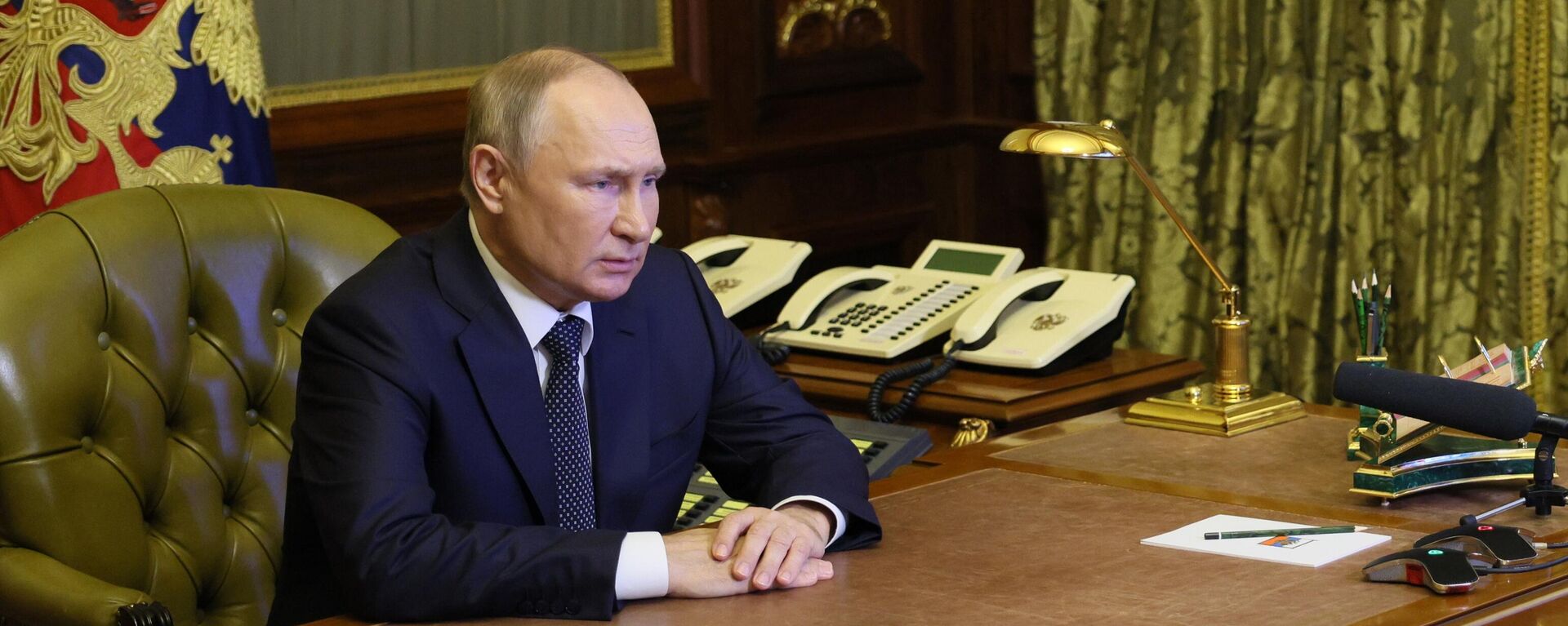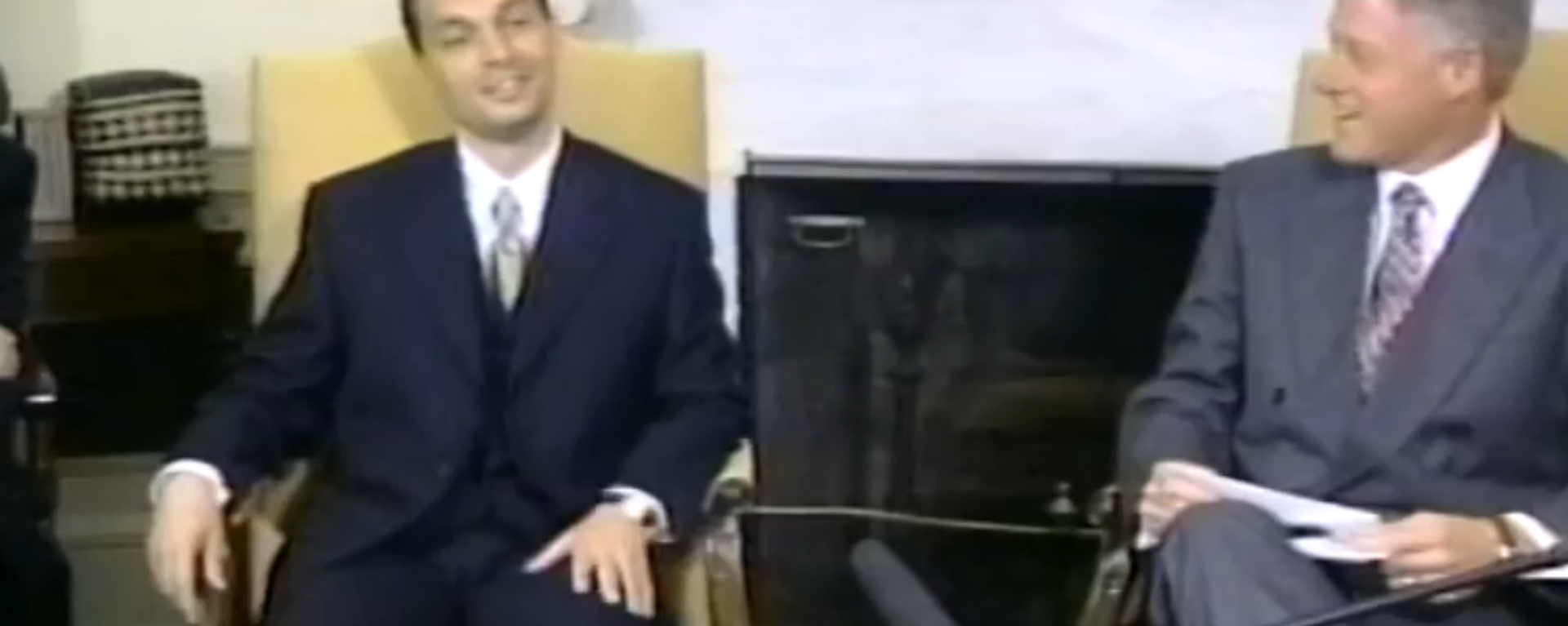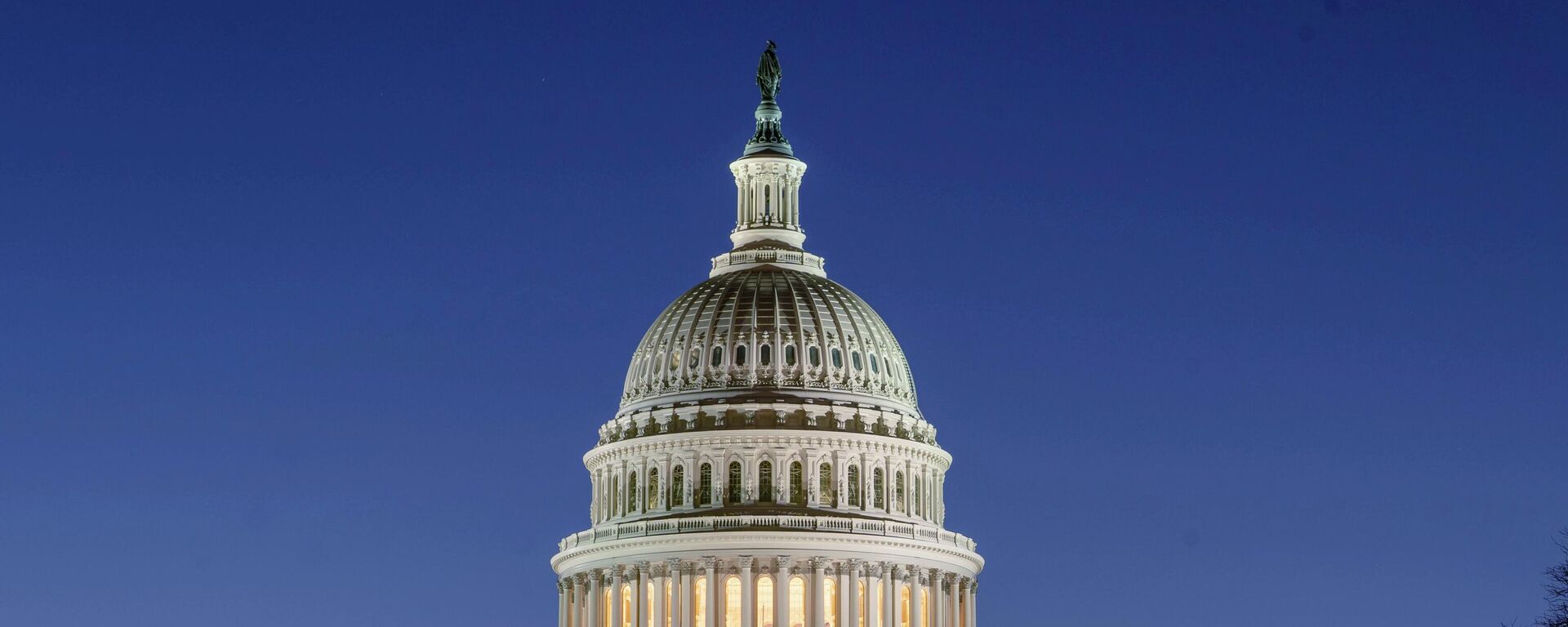https://sputnikglobe.com/20221010/russias-infrastructure-strikes-show-crimean-bridge-was-red-line-and-kiev-crossed-it-observers-1101696580.html
Russia’s Infrastructure Strikes Show Crimean Bridge Was ‘Red Line’ and Kiev Crossed It: Observers
Russia’s Infrastructure Strikes Show Crimean Bridge Was ‘Red Line’ and Kiev Crossed It: Observers
Sputnik International
Russia conducted massed long-range missile strikes against energy infrastructure, communications and military command facilities deep inside Ukraine on Monday... 10.10.2022, Sputnik International
2022-10-10T17:07+0000
2022-10-10T17:07+0000
2022-10-19T20:57+0000
russia
strikes
military
crimean bridge
kiev
russian precision strikes on ukraine
ukraine
https://cdn1.img.sputnikglobe.com/img/07e6/0a/0a/1101696430_0:27:721:432_1920x0_80_0_0_76ca5c24e422f601c3aef913e3169e80.jpg
At a meeting of the Russian Security Council meeting on Monday, President Putin said that Moscow’s campaign of massed air and missile strikes against Ukraine were a response not only to the attack on the Crimean Bridge, but a long list of other terrorist actions by Kiev in recent months targeting Russian infrastructure and even Ukraine’s own cities and people. The Ukrainian authorities’ actions put them “on a par with the most odious terrorist groups,” and Russia could not “leave such crimes unanswered,” he said. If the terrorism against Russia continues, Moscow’s responses “will be tough and will correspond in scale to the level of threat posed,” Putin warned.Monday’s strikes targeted infrastructure across an area stretching more than 1,000 km, with electricity-generating infrastructure and military targets stretching from Kharkov and Dnepropetrovsk to Odessa, Kiev, Ternpol and Lvov hit in missile attacks, which temporarily left swathes of the country without access to electricity.‘Russia Doesn’t Bluff’“I think Russia had warned that an attack on critical infrastructure such as the Crimean Bridge would represent a red line and that if Ukraine crossed it, the nature of the conflict would be transformed. And so I think we’re seeing a manifestation of this. Russia doesn’t bluff,” Scott Ritter, a former US Marine Corps intelligence officer, UN weapons inspector and independent military analyst, told Sputnik.The analyst pointed out that in the eight months up to this moment, Moscow largely restricted the special military operation to Ukrainian military targets, and avoided fighting the conflict in the same way that the Ukrainian military has since it began its terror bombing and shelling civilians in the Donbass in 2014.Even Monday’s strikes were aimed at targets which are legitimate under the laws of war, Ritter emphasized. “They are legitimate infrastructure targets. They are legitimate command and control targets. This is not an assault on innocent civilian population centers. So there is a distinct difference between the way Russia approaches strategic conflict and Ukraine approaches strategic conflict.”‘Pure Hypocrisy’Asked to comment on statements made by US Ambassador to Ukraine Bridget Brink and European Union foreign policy chief Josep Borrell to the effect that Russia’s strikes constituted a barbaric and “shocking” “attack on Ukrainian civilians,” Ritter, a veteran of the Gulf War, suggested that what the Russian military did Monday was just a sample of what the United States and its allies did in that 1990-1991 conflict, and said that frankly, many US military people like himself expected Moscow to target infrastructure from day one.“As somebody who participated in Operation Desert Storm back in 1991 against Iraq and understood the full scope and scale of the strategic air campaign that the United States waged against Iraq, I would say that Russia’s attacks today mirrored the targeted approach taken by the United States in Desert Storm against Iraq. So anybody who criticizes Russia’s approach as an assault on civilian infrastructure, an assault on civilians, simply speaking, don’t know anything about war, the laws of war, and if you’re an American making this [claim] or an American ally, then you’re a hypocrite. Because this is the exact same approach that the United States took against Iraq in 1991,” he said.Stevan Gajic, a research associate at the Belgrade-based Institute of European Studies, echoed Ritter’s sentiments regarding Borrell and Brink’s comments, pointing out that the collective West has been effectively “involved in war efforts against Russia” for months. “To say such a thing in the environment when all Western European countries and all NATO members are providing military aid and lethal weapons to Ukraine is nothing except pure hypocrisy,” the professor said.War of NervesWith the special operation effectively turning into a long, bitter struggle, Ritter believes that although Kiev took the conflict “to the next level” by attacking the Crimean Bridge, Russia’s capabilities at this level far exceed “anything that Ukraine can bring to the table.”Whether that will take place or not is unknown, according to Ritter –since the strikes could cause the morale of Ukrainian forces to fall, or on the contrary, steel their resolve to resist, even if this resolve becomes meaningless without the necessary military means.At the same time, Ritter warned that the neo-Nazi formations inside Ukraine’s Armed forces, like Azov, Aidar and Kraken, would continue doing what they do best – attacking civilians, and will do so for as long as they are able. Russia will continue to face the threat of terrorism by these forces. “I think Russia would make a mistake if they allowed a pause in the current retaliation, because Ukraine will not stop. Ukraine will continue to carry out these actions. So the quicker this conflict can be brought to a decisive conclusion, the better it will be for everybody, including those who want to limit Ukraine’s capability to wage terrorism against Russia,” he said.Zelensky’s Falling StarMoscow-based military expert Ivan Konovalov echoed Ritter’s sentiments regarding the strikes’ immediate impact and their inability to bring a speedy end to the crisis.“The leaders in Kiev have long gone mad, and this applies even more so to the troops subordinated to the Kiev regime, who are controlled by inadequate commanders. They are not going to stop shelling and will do so to the last man. In general, I want to say that their behavior, first and foremost toward the Donbass, is indicative. 70 percent of the shelling is directed at civilian areas, and only 30 percent at enemy positions,” Konovalov explained.Paolo Raffone, director of the CIPI Foundation, a Brussels-based geopolitical affairs think tank, characterized Monday’s strikes a “swift response” by Russia to Ukrainian attacks on Russian territory.“It can be expected that Ukrainian forces will find it more difficult to continue attacks on the Donbass and elsewhere. The electricity and thermal cuts also reduce the resilience and the operational capabilities of Ukrainian forces. Some changes in the top Ukrainian chain of command are reportedly taking place and Zelensky has reportedly been taken to a safe area out of Kiev,” Raffone said.West’s Frankenstein MonsterRaffone pointed out that support for Ukraine is already evaporating among some major Western countries, with more and more voices calling for dialogue to stop the conflict, and public support for Kiev in these countries falling, particularly as they face growing economic difficulties.“The major problem is that nobody, particularly in the EU and NATO, has devised a plan to contain the uncontrolled, hyper-armed Ukraine. Such an accumulation of armaments, together with the frustration of the Ukrainian forces and population, may result in serious security problems in Europe. The US is far away, Europe is here, next to the Ukrainian battlefield,” Raffone warned.Anglo-Saxon StrategyTiberio Graziani, chairman of Vision & Global Trends – International Institute for Global Analyses, a Rome-based geopolitical affairs think tank, takes a broader view, and believes that Russia’s strikes were “the logical consequence” of a two-front conflict – “the immediate Ukrainian one and the strategic Anglo-American one.” The attack on the Crimean Bridge, combined with last month’s sabotage of the Nord Stream pipelines, laid bear the “real immediate purpose” of the conflict, he said.“[It] consists of at least three elements: the destruction of the German economy, that is, the economy of continental Europe, with the consequence of the total enslavement of the elite of the European Union to Anglo-American interests; the creation of a deep rift between the Europeans and the Russians, which will be difficult to overcome in the future, [and] the creation of a new Russophobic Europe aided by Polish nationalists and the governments of Baltic countries,” Graziani noted.Putin’s Real OptionsDr. Matthew Crosston, a professor of national security policy and specialist in international security and intelligence studies at the Bowie State University in Maryland, says Monday’s strikes debunk the myth spread by the US and Kiev in recent weeks that an ‘irrational’ Putin might resort to using nuclear weapons in Ukraine after being cornered by a string of defeats.“They never even surmised here that he might up the traditional kinetic Russian air power and missile strikes against Kiev and central Ukraine. Putin’s moves today show he finally recognizes [the Ukrainian crisis] as a real war. As such, he has more options and not just nukes. The West and Ukraine quite frankly got a little bit arrogant and presumptuous with their recent so-called ‘successes’. Everyone here just assumed that meant Russia was de facto defeated. It just needed to admit it or do something ‘crazy’. This move today shows Russia isn’t done yet and it’s also not crazy,” the academic said.Crisis the West UnleashedWhatever happens next, Scott Ritter stressed that it was important to emphasize that the US and its allies are “100 percent responsible for the totality of this conflict,” beginning with the 2014 Euromaidan coup, to their unwillingness or inability to compel Kiev to implement the Minsk Agreements, which he said proved “a shame designed to buy time so that NATO could train the Ukrainian military [to make it] capable of resolving the Donbass situation by military force.”“This is the West’s fault. The West trained the Ukrainian military. The West never backed away from NATO expansion. The West rejected Russia's diplomatic outreach in December of last year, and then the West has turned what could have been a limited military engagement into a full-scale strategic conflict between the collective West, inclusive of NATO, and Russia on Ukrainian soil. The West provided the weapons, the West provided the intelligence, the West provided the training, the West provided the communication, the West provided the logistics. This is a war between NATO, other European allies, using Ukraine as a proxy to fight Russia. They're 100 percent responsible for everything that has happened and will happen in Ukraine,” Ritter concluded.
https://sputnikglobe.com/20221012/map-of-missile-strikes-on-ukraine-1101690212.html
https://sputnikglobe.com/20221010/putin-russian-high-precision-weapons-striking-infrastructure-in-response-to-kievs-terrorism-1101677340.html
https://sputnikglobe.com/20221008/clinton-tried-to-push-hungarys-orban-into-invading-yugoslavia-during-1999-nato-war-vucic-reveals-1101637410.html
https://sputnikglobe.com/20220927/us-rep-pete-sessions-says-he-did-not-know-he-met-with-azov-militants-on-capitol-hill-1101287034.html
https://sputnikglobe.com/20221005/new-push-to-get-ukraine-into-nato-shows-zelenskyy-running-out-of-props-1101515733.html
https://sputnikglobe.com/20221006/record-number-of-germans-dissatisfied-with-economic-situation-in-country---poll-1101586890.html
https://sputnikglobe.com/20220411/ukraine-from-2004-to-2022-from-the-first-maidan-to-catastrophe-1094623112.html
russia
crimean bridge
kiev
ukraine
Sputnik International
feedback@sputniknews.com
+74956456601
MIA „Rossiya Segodnya“
2022
News
en_EN
Sputnik International
feedback@sputniknews.com
+74956456601
MIA „Rossiya Segodnya“
Sputnik International
feedback@sputniknews.com
+74956456601
MIA „Rossiya Segodnya“
russia, strikes, military, crimean bridge, kiev, ukraine
russia, strikes, military, crimean bridge, kiev, ukraine
At a meeting of the Russian Security Council meeting on Monday, President Putin
said that Moscow’s campaign of massed air and missile strikes against Ukraine were a response not only to the attack on the Crimean Bridge, but a long list of other terrorist actions by Kiev in recent months targeting Russian infrastructure and even Ukraine’s own cities and people.
The Ukrainian authorities’ actions put them “on a par with the most odious terrorist groups,” and Russia could not “leave such crimes unanswered,” he said. If the terrorism against Russia continues, Moscow’s responses “will be tough and will correspond in scale to the level of threat posed,” Putin warned.
Monday’s strikes targeted infrastructure across an area stretching more than 1,000 km, with electricity-generating infrastructure and military targets stretching from Kharkov and Dnepropetrovsk to Odessa, Kiev, Ternpol and Lvov hit in missile attacks, which temporarily left swathes of the country without access to electricity.

12 October 2022, 15:38 GMT
“I think Russia had warned that an attack on critical infrastructure such as the Crimean Bridge would represent a red line and that if Ukraine crossed it, the nature of the conflict would be transformed. And so I think we’re seeing a manifestation of this. Russia doesn’t bluff,” Scott Ritter, a former US Marine Corps intelligence officer, UN weapons inspector and independent military analyst, told Sputnik.
“I don’t know what Ukraine thought they were going to accomplish by attacking the Crimean Bridge. I don’t know if the momentary feeling of accomplishment is worth the price. That’s a question only Ukraine can answer once the full extent of the retaliation is understood. But this retaliation may be extended over time and will most likely be devastating. This is a tragedy for the Ukrainian nation. I’m not saying that Russia is not justified in doing this – I’m saying that it didn’t need to happen. And the blame rests fully with Ukraine for attacking the Crimea Bridge,” Ritter said.
The analyst pointed out that in the eight months up to this moment, Moscow largely restricted the special military operation to Ukrainian military targets, and avoided fighting the conflict in the same way that the Ukrainian military has since it began its terror bombing and shelling civilians in the Donbass in 2014.
Even Monday’s strikes were aimed at targets which are legitimate under the laws of war, Ritter emphasized. “They are legitimate infrastructure targets. They are legitimate command and control targets. This is not an assault on innocent civilian population centers. So there is a distinct difference between the way Russia approaches strategic conflict and Ukraine approaches strategic conflict.”

10 October 2022, 10:09 GMT
Asked to comment on
statements made by US Ambassador to Ukraine Bridget Brink and European Union foreign policy chief Josep Borrell to the effect that Russia’s strikes constituted a barbaric and “shocking” “attack on Ukrainian civilians,” Ritter, a veteran of the Gulf War, suggested that what the Russian military did Monday was just a sample of what the United States and its allies did in that 1990-1991 conflict, and said that frankly, many US military people like himself expected Moscow to target infrastructure from day one.
“As somebody who participated in Operation Desert Storm back in 1991 against Iraq and understood the full scope and scale of the strategic air campaign that the United States waged against Iraq, I would say that Russia’s attacks today mirrored the targeted approach taken by the United States in Desert Storm against Iraq. So anybody who criticizes Russia’s approach as an assault on civilian infrastructure, an assault on civilians, simply speaking, don’t know anything about war, the laws of war, and if you’re an American making this [claim] or an American ally, then you’re a hypocrite. Because this is the exact same approach that the United States took against Iraq in 1991,” he said.
“The big difference is that Russia didn’t initiate this conflict in this manner. I mean, we are more than eight months into this conflict, and Russia only now is undertaking the kind of strikes that the United states took on day one. I think it points to the fact that Russia has taken a very restrained approach to this conflict, that this conflict was indeed never meant to escalate to this level, that Russia clearly had limited objectives and was applying limited military means to achieve those objectives,” Ritter added.
Stevan Gajic, a research associate at the Belgrade-based Institute of European Studies, echoed Ritter’s sentiments regarding Borrell and Brink’s comments, pointing out that the collective West has been effectively “involved in war efforts against Russia” for months. “To say such a thing in the environment when all Western European countries and all NATO members are providing military aid and lethal weapons to Ukraine is nothing except pure hypocrisy,” the professor said.

8 October 2022, 12:27 GMT
With the special operation effectively turning into a long, bitter struggle, Ritter believes that although Kiev took the conflict “to the next level” by attacking the Crimean Bridge, Russia’s capabilities at this level far exceed “anything that Ukraine can bring to the table.”
“The strategic targeting that’s taking place now and perhaps will take place over an extended period of time is designed to degrade the will and capability of the Ukrainian nation to continue to resist, and [to] have a direct impact on the ability of the Ukrainian military to continue the struggle in the field,” the observer said.
Whether that will take place or not is unknown, according to Ritter –since the strikes could cause the morale of Ukrainian forces to fall, or on the contrary, steel their resolve to resist, even if this resolve becomes meaningless without the necessary military means.
“I think these strategic attacks aren’t just about impacting the morale of the Ukrainian nation, but the real capability of the Ukrainian nation – the ability to transport troops and equipment, the ability to communicate, the ability to survive, with no electricity, no fuel,” Ritter stressed.
At the same time, Ritter warned that the neo-Nazi formations inside Ukraine’s Armed forces, like Azov, Aidar and Kraken, would continue doing what they do best – attacking civilians, and will do so for as long as they are able. Russia will continue to face the threat of terrorism by these forces. “I think Russia would make a mistake if they allowed a pause in the current retaliation, because Ukraine will not stop. Ukraine will continue to carry out these actions. So the quicker this conflict can be brought to a decisive conclusion, the better it will be for everybody, including those who want to limit Ukraine’s capability to wage terrorism against Russia,” he said.

27 September 2022, 17:57 GMT
Moscow-based military expert Ivan Konovalov echoed Ritter’s sentiments regarding the strikes’ immediate impact and their inability to bring a speedy end to the crisis.
“The leaders in Kiev have long gone mad, and this applies even more so to the troops subordinated to the Kiev regime, who are controlled by inadequate commanders. They are not going to stop shelling and will do so to the last man. In general, I want to say that their behavior, first and foremost toward the Donbass, is indicative. 70 percent of the shelling is directed at civilian areas, and only 30 percent at enemy positions,” Konovalov explained.
As for Western support for Kiev, the observer reasons that while it is clear that the US will not stop its aid, the coming winter will be certain to influence the decision-making of the Europeans. In any case, the strikes will pose difficulties for Ukraine’s energy system amid the approaching cold weather, and Kiev shouldn’t expect the Europeans to help the country to any meaningful degree.
Paolo Raffone, director of the CIPI Foundation, a Brussels-based geopolitical affairs think tank, characterized Monday’s strikes a “swift response” by Russia to Ukrainian attacks on Russian territory.
“It can be expected that Ukrainian forces will find it more difficult to continue attacks on the Donbass and elsewhere. The electricity and thermal cuts also reduce the resilience and the operational capabilities of Ukrainian forces. Some changes in the top Ukrainian chain of command are reportedly taking place and Zelensky has reportedly been taken to a safe area out of Kiev,” Raffone said.
“This indicates that Ukraine’s [system of political power] is ‘fluid, open to possible changes, especially after the US ‘warnings’ signaling irritation for the ‘uncoordinated initiatives of Ukraine forces with allies’. While behind the scenes major powers (US, Russia and China) continue to keep some dialogue, Zelensky’s rising star[may be] falling,” he added.

5 October 2022, 00:30 GMT
West’s Frankenstein Monster
Raffone pointed out that support for Ukraine is already evaporating among some major Western countries, with more and more voices calling for dialogue to stop the conflict, and public support for Kiev in these countries falling, particularly as they face growing economic difficulties.
“The major problem is that nobody, particularly in the EU and NATO, has devised a plan to contain the uncontrolled, hyper-armed Ukraine. Such an accumulation of armaments, together with the frustration of the Ukrainian forces and population, may result in serious security problems in Europe. The US is far away, Europe is here, next to the Ukrainian battlefield,” Raffone warned.
Tiberio Graziani, chairman of Vision & Global Trends – International Institute for Global Analyses, a Rome-based geopolitical affairs think tank, takes a broader view, and believes that Russia’s strikes were “the logical consequence” of a two-front conflict – “the immediate Ukrainian one and the strategic Anglo-American one.” The attack on the Crimean Bridge, combined with last month’s sabotage of the Nord Stream pipelines, laid bear the “real immediate purpose” of the conflict, he said.
“[It] consists of at least three elements: the destruction of the German economy, that is, the economy of continental Europe, with the consequence of the total enslavement of the elite of the European Union to Anglo-American interests; the creation of a deep rift between the Europeans and the Russians, which will be difficult to overcome in the future, [and] the creation of a new Russophobic Europe aided by Polish nationalists and the governments of Baltic countries,” Graziani noted.

6 October 2022, 21:32 GMT
Dr. Matthew Crosston, a professor of national security policy and specialist in international security and intelligence studies at the Bowie State University in Maryland, says Monday’s strikes debunk the myth spread by the US and Kiev in recent weeks that an ‘irrational’ Putin might resort to using nuclear weapons in Ukraine after being cornered by a string of defeats.
“They never even surmised here that he might up the traditional kinetic Russian air power and missile strikes against Kiev and central Ukraine. Putin’s moves today show he finally recognizes [the Ukrainian crisis] as a real war. As such, he has more options and not just nukes. The West and Ukraine quite frankly got a little bit arrogant and presumptuous with their recent so-called ‘successes’. Everyone here just assumed that meant Russia was de facto defeated. It just needed to admit it or do something ‘crazy’. This move today shows Russia isn’t done yet and it’s also not crazy,” the academic said.
Crisis the West Unleashed
Whatever happens next, Scott Ritter stressed that it was important to emphasize that the US and its allies are “100 percent responsible for the totality of this conflict,” beginning with the 2014 Euromaidan coup, to their unwillingness or inability to compel Kiev to implement the
Minsk Agreements, which he said proved “a shame designed to buy time so that NATO could train the Ukrainian military [to make it] capable of resolving the Donbass situation by military force.”
“This is the West’s fault. The West trained the Ukrainian military. The West never backed away from NATO expansion. The West rejected Russia's diplomatic outreach in December of last year, and then the West has turned what could have been a limited military engagement into a full-scale strategic conflict between the collective West, inclusive of NATO, and Russia on Ukrainian soil. The West provided the weapons, the West provided the intelligence, the West provided the training, the West provided the communication, the West provided the logistics. This is a war between NATO, other European allies, using Ukraine as a proxy to fight Russia. They're 100 percent responsible for everything that has happened and will happen in Ukraine,” Ritter concluded.









